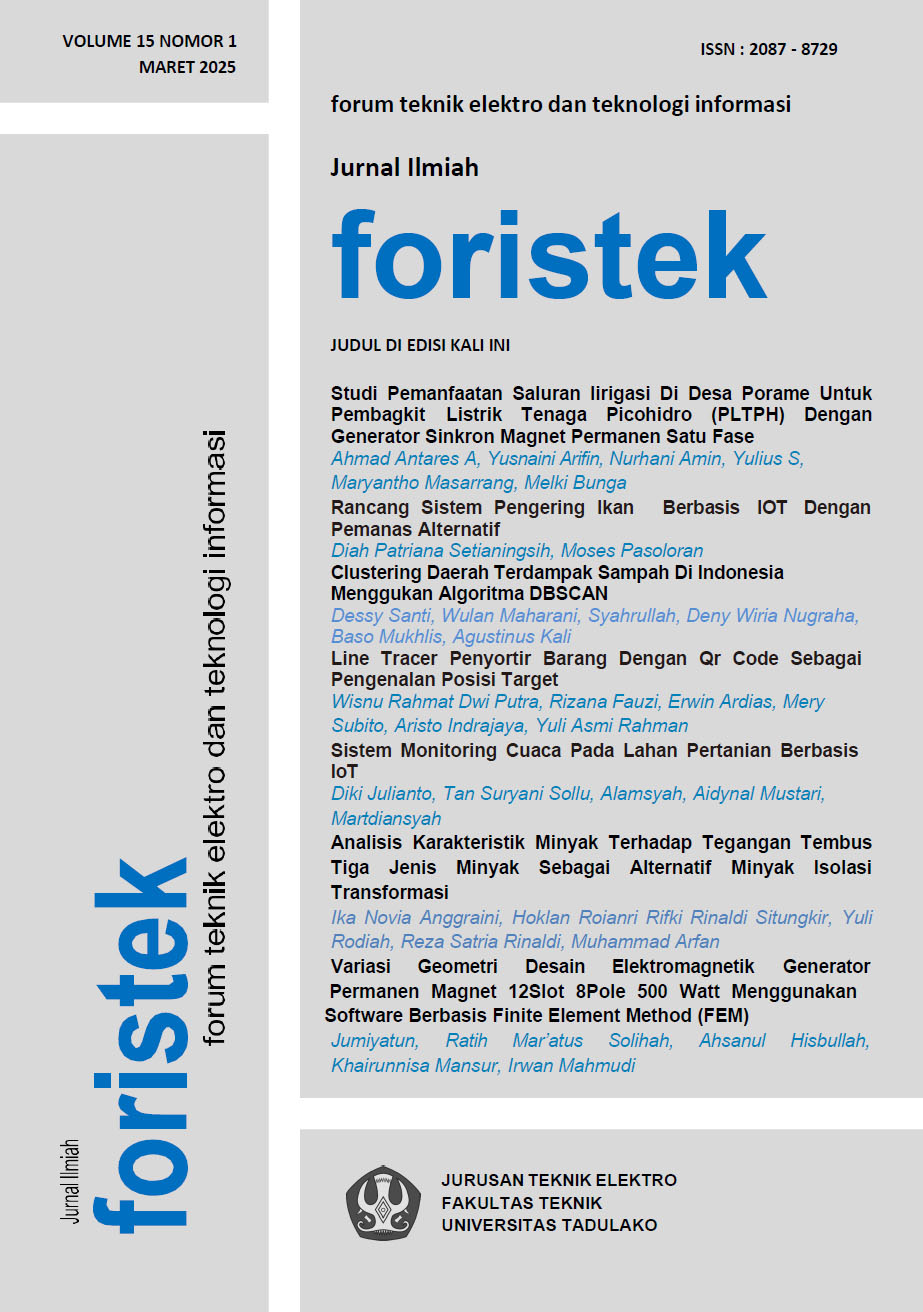CLUSTERING DAERAH TERDAMPAK SAMPAH DI INDONESIA MENGGUNAKAN ALGORITMA DBSCAN.
DOI:
https://doi.org/10.54757/fs.v15i1.751Keywords:
Clustering, DBSCAN,Outlier,Wasted,SpatialAbstract
The waste problem in Indonesia is a complex and evolving environmental issue, particularly in areas with high population density and economic activity. This study aims to cluster regions affected by waste issues using the Density-Based Spatial Clustering of Applications with Noise (DBSCAN) algorithm. DBSCAN was chosen for its ability to identify spatial patterns and detect outliers without requiring a predefined number of clusters. The data used includes spatial and non-spatial information related to waste volume and regional characteristics across various provinces in Indonesia. The results show that DBSCAN effectively groups waste-affected areas into several clusters based on data density and spatial proximity. These clusters can serve as a foundation for determining policy priorities for regional and national waste management. This research is expected to contribute to the development of more targeted and data-driven waste management strategies.
Downloads
Published
How to Cite
Issue
Section
License
Copyright (c) 2025 Dessy Santi, Wulan Maharani, Syahrullah Syahrullah, Baso Mukhlis, Agustinus Kali

This work is licensed under a Creative Commons Attribution 4.0 International License.








 This work is licensed under a
This work is licensed under a 



